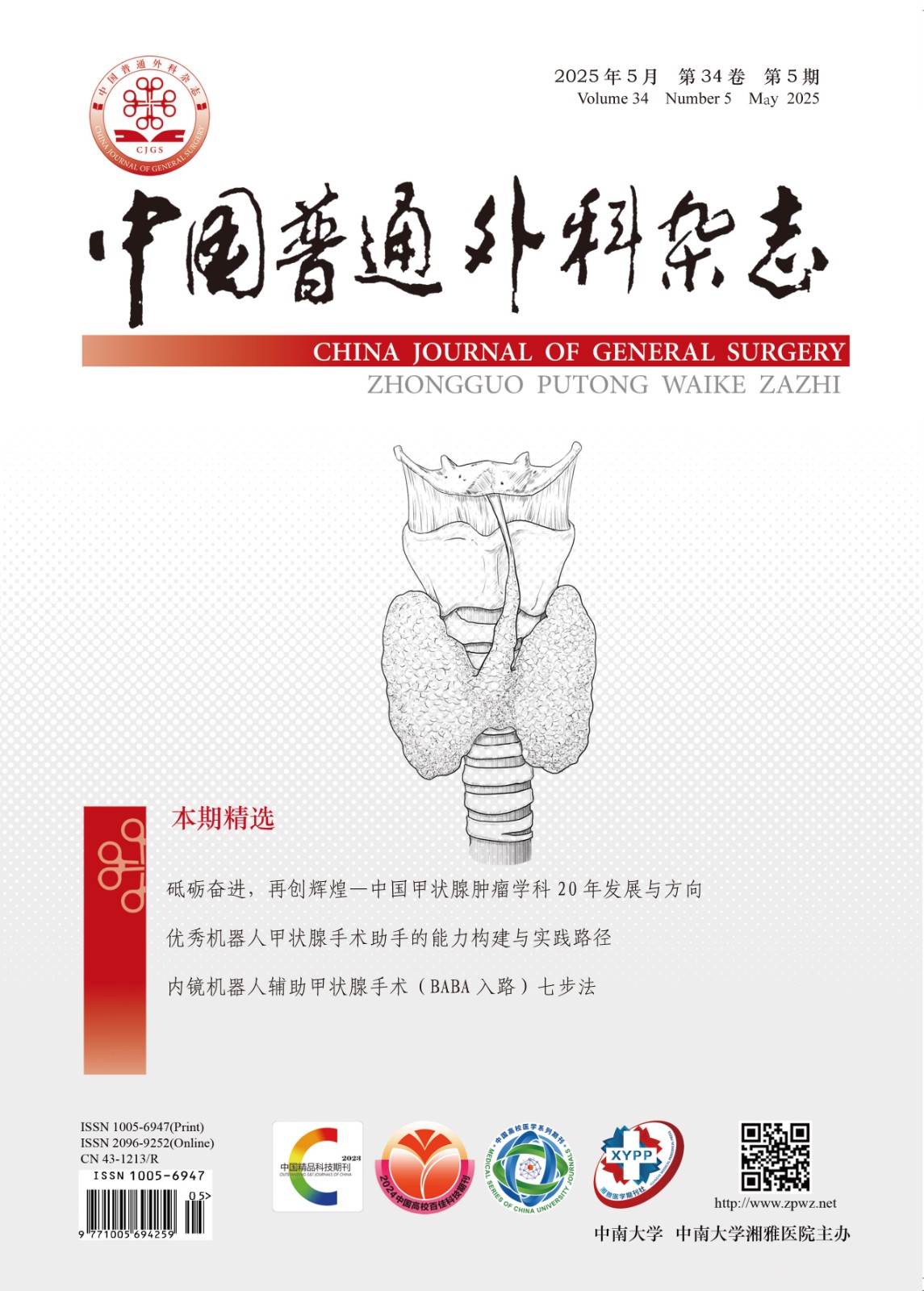Abstract:Background and Aims With the widespread use of electrosurgical devices in open thyroid surgery, the surgical smoke generated during procedures has become a significant concern, as it compromises surgical visibility, reduces operational efficiency, and poses health risks to medical staff. Currently, local smoke evacuation is commonly performed by an assistant using a handheld suction device, which is limited in range, interferes with surgical procedures, and increases labor costs. This study aimed to evaluate the effectiveness, safety, feasibility, and staff satisfaction associated with a self-made annular smoke evacuation device constructed from readily available materials for use in open thyroid surgery.Methods A total of 82 patients undergoing open surgery for papillary thyroid carcinoma at Suqian First People's Hospital between March and June 2024 were randomly assigned to an observation group and a control group (41 patients each). During surgery, the observation group used a self-made annular smoke evacuation device for continuous smoke removal, while the control group used conventional manual suction via an assistant. Outcomes compared between the two groups included PM2.5 concentrations 30 cm above the surgical field, operative time, intraoperative blood loss, and medical staff satisfaction with smoke removal.Results During thyroid tissue dissection, the PM2.5 concentration in the observation group was (63.26±11.71) μg/m3, corresponding to a "good" air quality level, while in the control group it was (126.35±40.12) μg/m3, ranging from "mild to severe pollution"—a statistically significant difference (P<0.05). In the observation group, operative times for unilateral and bilateral procedures were (31.25±11.36) min and (71.13±17.12) min, respectively, with intraoperative blood loss of (10.5±5.3) mL and (18.6±5.5) mL. In the control group, times were (39.27±15.42) min and (78.35±22.35) min, with blood loss of (12.5±5.8) mL and (20.5±6.5) mL, respectively—all differences not statistically significant (all P>0.05). Staff satisfaction was significantly higher in the observation group compared to the control group (97.6% vs. 31.7%, P<0.05).Conclusion The self-made annular smoke evacuation device demonstrated favorable results in open thyroid surgery, effectively reducing surgical smoke concentration, improving visibility, and minimizing health risks to medical staff without compromising surgical efficiency or safety. The device is cost-effective, easy to assemble, and can be repurposed postoperatively as a drainage tube, requiring no additional consumables. Its reusability and ease of integration offer strong practical value and clinical applicability.





























































